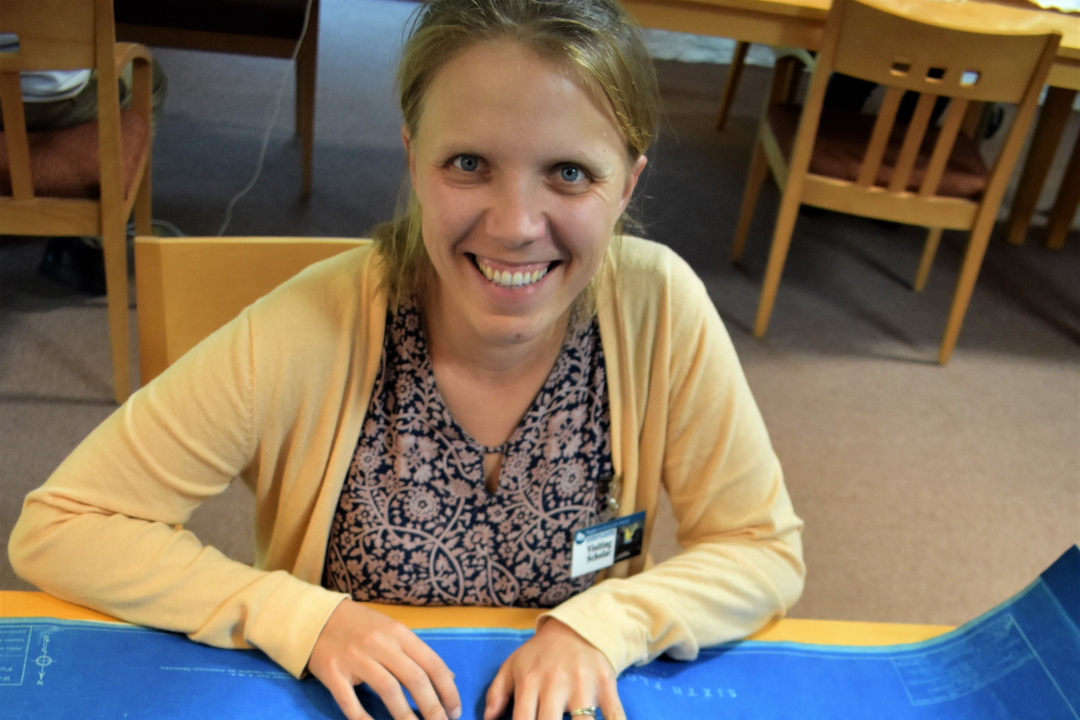Vyta Baselice entered the PhD program in Fall 2016. She is interested in the intersecting histories of architecture, materials, historic preservation, capitalism and labor. Her interdisciplinary dissertation traces the evolution of the concrete building industry and its strategic shaping of the built environment in the United States. In addition to interrogating contributions by “master pourers” like Marcel Breuer, Louis Kahn and Paul Rudolph, the project examines roles played by more obscure actors, from manufacturers, laborers, and trade organizations to the New York mafia. Employing critical theory, archival research and phenomenological methodologies, the dissertation considers the complex lives of béton brut landscapes and challenges the notion that concrete was necessary and imminent for American modernity. Vyta also holds a Master's degree in architectural history from the Bartlett School of Architecture, University College London and a Bachelor's degree in studio arts/architecture from Wesleyan University.
How does American Studies inform your work in architecture and urbanism?
Although my work largely focuses on the built environment, I always ask American Studies questions that concern issues of race, gender, class, and capitalism. So, instead of following the developments of particular designers and their ambitions, I query how their work participates in and reveals a broader conversation about American values and histories. I am convinced that architecture is an especially revealing medium through which to understand all forms of American experience and conflict.
What is the first goal you hope to accomplish in your new role as the Graduate Representative for the Society of Architectural Historians?
I have been recently elected to the boards of directors of the Society of Architectural Historians and the Vernacular Architecture Forum; I have also been elected as president of the Latrobe Chapter of SAH in Washington, DC. In these roles, I have an opportunity to create a platform and highlight the excellent research that scholars are producing on architectural topics all over the world. In terms of graduate student representation, I want to make sure that there are opportunities to develop collaborative graduate student communities that share resources and ideas; another ambition of mine is to secure more funding to enable international students to attend conferences and present their work. Most recently, as president of SAH Latrobe, I revamped our fellowship program to open it to all graduate students - not merely local or domestic - working on topics that concern architecture and politics.
Could you tell us more about your dissertation, titled "The Gospel of Concrete: American Infrastructure and Global Power?"
My dissertation is a cultural and social history of American concrete. I query how and why this particular version of concrete became the second most consumed material on the planet after water, and why we have failed to imagine and institute alternatives to its monopoly. The four dissertation chapters trace the matter's dramatic spread, starting with its origins in the Lehigh Valley of Pennsylvania, expansion to the American South, empire in the Global South, and colonization of outer space. The geographically-specific case studies hone in on the different methodologies, or what workers referred to as "gospels," the concrete industry employed to extend its influence. It blended cement not only with other ingredients, but also with our bodies, pedagogies, military campaigns, and science. The title therefore refers to this ethic of mixing that allowed the industry to gain flexibility and adjust to the changing political and environmental conditions, from deindustrialization and oil crises, to climate change.
What has been your favorite project that you have worked o so far?
One of my most memorable experiences was conducting dissertation research on tabby architecture in Georgia and Florida - an experience that was generously funded by the Kasch Foundation. I traveled down south to experience tabby architecture ruins first-hand; tabby is a vernacular form of concrete used largely by enslaved people to build their residences and other functional buildings. It was amazing to witness that even though we imagine concrete to be a perpetually modern material, a form of it was employed by various people significantly earlier.
What paths did you take to get to where you are now?
I completed my BA in studio arts/architecture at Wesleyan University and my MA in architectural history at University College London. My education therefore involved both a practical understanding of how buildings are constructed as well as a more historical and theoretical examination of why and why in this particular way. Beyond academia, I have traveled extensively to nearly all continents around the world, which very meaningfully shaped my interest in different building traditions.
Where do you see yourself going next in your career?
I am eager to finish a draft of my dissertation and take the next steps to turn it into a book. And then, obviously, I cannot wait to share it with the broader public.
What is the best career advice you’ve ever received and what advice would you give American Studies students today?
One advice that I received from my MA director, Adrian Forty, was to not write about buildings I have not personally experienced. I agree there is so much to learn from visiting and intimately engaging not only buildings but also places, communities, and cities that you study. So, get away from your laptop and get out into the world! I think this type of curiosity has led me to many of my professional experiences, including working at the Library of Congress and the National Park Service.
Is there anything else you’d like to add?
I would like to emphasize how important it is for everyone to pursue some degree of American Studies education whether at undergraduate or graduate level. Learning about issues of race, gender, class, and their intersections is invaluable for becoming a more critical and contributing member of society, and also for understanding what is happening in our often confusing and nonsensical world.


